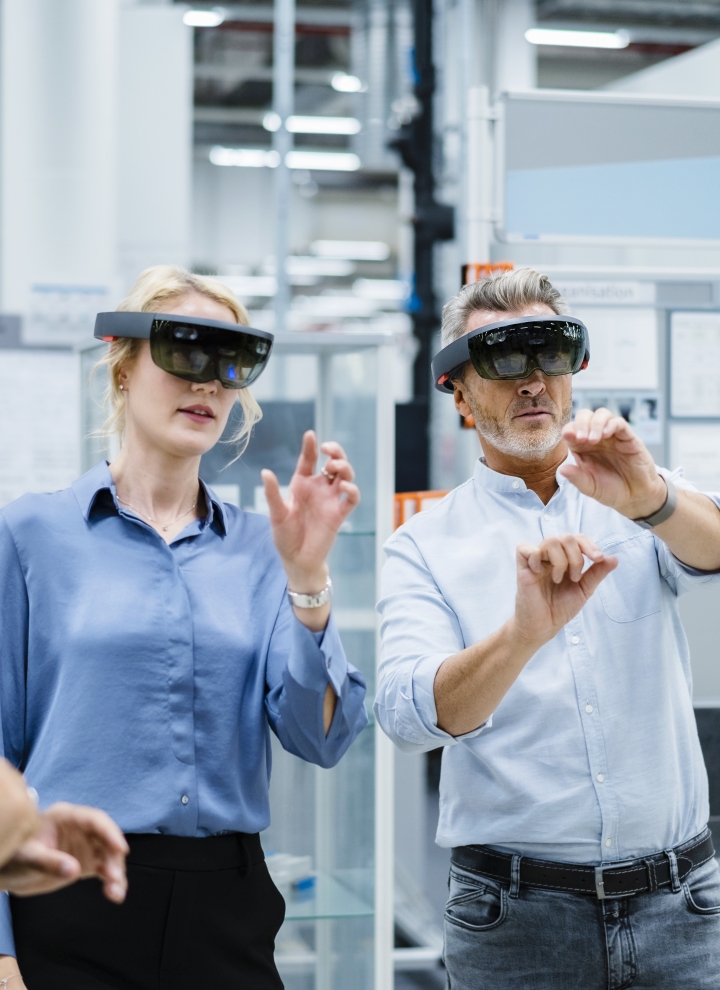Meter Data System Monitoring

Meter Data System Monitoring
System operation process monitoring and reporting
Siemens Advanta provides clients with a solution to monitor their smart meter infrastructure from end to end, including transparent data flows and relevant meter-to-cash processes, identify hotspots, ensure system health, and monitor data flow with ease. Included in the offering are insightful dashboards to diagnose issues early, minimize downtimes, optimize performance, intervene promptly, and prevent future malfunctions.
- Monitoring the entirety of relevant meter-to-cash processes
- Dashboards to visualize monitored data & derive KPIs
- Co-create additional system monitoring use cases with client
- Improved monitoring of OT/IT processes, systems help to reduce downtime and increase productivity by targeting critical end-to-end processes
- Enhanced visibility through comprehensive graphical views enabling better decision making and predicative maintenance
- The solution can identify process performance bottlenecks, enabling businesses to investigate and optimize which can effectively lower operational costs
- The integrated OT/IT real-time monitoring allows for the identification of potential risks and enhances overall security and compliance efforts
- The open-source technology used can be easily scaled to accommodate business growth, process change, adoption of regulatory requirements, and monitoring of SLAs
- Improved customer experience by providing better insights into the end-to-end business/system integrated processes that can improve operational services
- Performance neutral implementation
- Available as native cloud components or on premise
- Meter-to-cash system in operation

Take a look at some typical Meter Data System Monitoring dashboards
Download nowOur industry leader

Agile Software Development

Agile Software Development
Sprint-based development of custom software solution
Siemens Advanta creates a software solution for the client’s business need, in an agile manner. Together with the client’s team, Siemens Advanta goes through the stages of problem discovery & target setting, details & aligns the objective, prototyping, solution design to business needs, proof of value, proof of real impact, productization, scaled implementation roadmap, and holistic scaling, including change management.
- Cooperative identification and assessment of problem statement and business demand
- Joint alignment of hypothesis and goal definition
- Agile sprint-based development of custom software solution
- Iterative validation of progress and achievements
- Tailored to client’s needs
- Transparent pricing model
- Co-creation approach to identify & validate business vision as basis for productization
We have thousands of developers working on the following topics:
- Vision Refinement Scoping
- Feasibility Studies
- Business Opportunity Development
- User Story Definition
- Technology Assessment
- Ref. Architecture
- Digital & IoT Strategy
- Design Thinking
- UX Design
- Solution Prototyping
- Conceptual Design
- Concept Validation
- Requirement Eng.
- UI Design
- Agile Project Setup
- Solution Architecture, Design & Customization
- Application Design & Development
- Systems Design
- Cloud Services
- OT Connectivity & Integration
- IT System Integration
- Platform Integration
- Enterprise Integration
- IT & OT Security
- Cybersecurity
- Machine Learning
- Computer Vision Analytics
- Predictive Maintenance
- Anomaly Detection
- Root Cause Analysis
- Data Visualization
- Real-Time Analytics
- Operate IoT Services and Solutions
- Maintaining Service Level Agreements (SLA)
- Continuous Solution Improvement
- Technical Support
- Customer Value Identification
- Customer Enablement
- Process Management
- Risk Management
- Quality Management
- Contract/ Subcontract Management
- Change Management
- Procurement Support/ Economies of Scale
Our industry leaders


Siemens Driving Sustainable Software Development

Siemens Driving Sustainable Software Development
Siemens Advanta as a leading force in green software innovation
Siemens is proud to announce its membership in the Green Software Foundation's steering committee, emphasizing a shared commitment to reducing software's environmental impact.
Why Siemens is committed
Software's Role in Sustainability: Siemens recognizes the pivotal role of software in advancing sustainability, aiming to invest in networks like Green Software Foundation (GSF) to drive change. GSF focuses on developing energy-efficient systems, striving to make green software the standrad for the future.

Read the Press Release
Read our press release to delve deeper into how Siemens is driving sustainable software development in collaboration with the Green Software Foundation.
Circularity Vehicle Passport

Circularity Vehicle Passport
The automotive industry at the forefront of circularity – a digital transformation
Digital product passports are a core element in the circular economy strategy of the European Union Green Deal.
In the upcoming years, we will see an increasing number of products to be accompanied with digital collections of their individual specifications and characteristics. With this, the EU aims to improve transparency for consumer decisions and all players along the value chain, to promote sustainable products and enable new circular business models.
The greater context – EU Green Deal & the automotive industry
On the path to fight climate change, circularity becomes increasingly prominent within the European Union and its member states. In fact, the European Green Deal declared circularity as one of the main pillars to drive sustainability. This implies that Europe’s major industries need to strive for increasing circular practices within their operations. The automotive industry is set to be one of the key areas for action, claiming the highest resource consumption within the EU as well as relying on an extensive value chain, impacting many other industries. Vehicle production is responsible for 19% of the steel consumption within the EU as well as for 10% of plastics used. Hence, legislators are evaluating measures to drive circular developments within the automotive industry in the context of the European Green Deal. (6)

Siemens Battery Passport
Our colleagues from Siemens are actively developing a Battery Passport ecosystem that goes beyond regulations. It empowers stakeholders to access and manage battery value chain data, using customizable add-on applications for analytics, sustainability, and more. This ecosystem is designed for universal accessibility and seamless integration with existing platforms, ensuring a user-friendly experience along the value chain. Join us in transforming the battery industry.
Several digital product passport approaches are expected to be relevant for the automotive industry. The nearest and most prominent example is the Battery Passport, based on the renewed EU Battery Regulation. It affects all electric vehicles with a high-voltage battery of 2 kWh capacity, sold in the European Union from 2027 onwards.
With a similar timeframe, the Environmental Vehicle Passport is expected, which as measure of the new EU Regulation on Type-Approval of Motor Vehicles (known as Euro 7), will redefine the scope of emission and approval data that carmakers must provide to customers.
Even more important is the Circularity Vehicle Passport, expected for 2032.
The proposal for a regulation on automotive circularity requirements
The Circular Vehicle Passport represents a groundbreaking approach to sustainability, revolutionizing the way we perceive and manage the lifecycle of vehicles. As the automotive industry embraces circular economy principles, the Circularity Vehicle Passport emerges as a pivotal document, enabling the efficient reuse, recycling, and repurposing of vehicles, thereby reducing waste, and minimizing environmental impact. (5)
The proposal by the European Union regarding the regulation on management of end-of-life vehicles, which is currently under evaluation, aims on driving circularity within the automotive industry. It focuses on six key action fields (4):
Design Circular
Improve the rules on how cars must be designed to be easily dismantled for later remanufacturing or material recycling.
Used recycled content
25% of the plastic used to build a new vehicle should be secondary material.
Collect more and smarter
Reduce the number of end-of-life vehicles gone missing, enforce rules for monitoring and increase transparency.
Treat better
Recover more and better-quality raw materials by improving recycling processes and promoting reuse strategies.
Make producers responsible
Stricter governance, improved cooperation, increased circularity.
Cover more vehicles
Gradually extend the scope of the rules, e.g. to commercial vehicles and road bikes (1).
By 2035, the regulation should lead to:
The Circularity Vehicle Passport as the digital enabler
To enforce the regulation and to reach the targets, a Circularity Vehicle Passport is stated as the digital enabler. It serves as a comprehensive, digital record that provides detailed information about a product's design, manufacturing, materials, and environmental impact, facilitating transparency, traceability, and sustainable practices throughout its lifecycle. Following more prominent solutions such as the Battery Passport or the Circularity Vehicle Passport may include:
- Material data, such as the composition of the vehicle, the weight of the materials used and their origin.
- Dismantling information, such as disassembly instructions, and recycling recommendations. (3)
Our take on the Circularity Vehicle Passport
The current regulation is still in its infancy and has not passed the proposal stage yet. Until now, there has been no official timeline set for the implementation of the regulation, neither have detailed information on the contents of the Circularity Vehicle Passport been defined. However, at Siemens Advanta Consulting, we believe that this or similar regulations will certainly become reality in the near future, following the landmarks of the European Green Deal. For the Circularity Vehicle Pass, we expect the corresponding regulation to enter into force in the beginning of the next decade. Therefore, we recommend automotive OEMs to engage in thought leadership and drive the development of an infrastructure which can enable digital product passports. Pioneers will further have the chance to push own standards in the market and actively collaborate on the development of industry standards. We also believe that those who go ahead now, can leverage considerable synergies from existing or planned digital product passports, such as the Battery Passport. Ultimately, just like the latter mentioned, the Circularity Vehicle Passport may also enable internal use cases for manufacturers to save costs, improve quality, or facilitate new business models and customer features.
With deep expertise in supporting external clients in the setup of already existing product passports, Siemens Advanta Consulting is your expert in the fast paced and constantly changing world of digital product passports. We are happy to guide you on your way towards a more sustainable future by using such digital tools, from the initial exploration of a fitting solution for you until the integration of the solution. We look forward to helping you close the loop and stepping into a bright circular future.
Our industry leader

- European Commission - Press release; Circular economy: improving design and end-of-life management of cars for more resource-efficient automotive sector; Brussels, 13 July 2023
- End-of-life vehicles Regulation (europa.eu)
- Proposal for a REGULATION OF THE EUROPEAN PARLIAMENT AND OF THE COUNCIL on circularity requirements for vehicle design and on management of end-of-life vehicles, amending Regulations (EU) 2018/858 and 2019/1020 and repealing Directives 2000/53/EC and 2005/64/EC; (Text with EEA relevance) {SEC(2023) 292 final} - {SWD(2023) 255 final} - {SWD(2023) 256 final} - {SWD(2023) 257 final}; Brussels, 13.07.2023
- COMMISSION STAFF WORKING DOCUMENT; Subsidiarity Grid; Accompanying the document
Proposal for a REGULATION OF THE EUROPEAN PARLIAMENT AND OF THE COUNCIL on circularity requirements for vehicle design and on management of end-of-life vehicles, amending Regulations (EU) 2018/858 and 2019/1020, repealing Directives 2000/53/EC and 2005/64/EC; {COM(2023) 451 final} - {SEC(2023) 292 final} - {SWD(2023) 256 final} - {SWD(2023) 257 final}; Brussels, 13.07.2023 - COMMISSION STAFF WORKING DOCUMENT; IMPACT ASSESSMENT REPORT; Accompanying the document Proposal for a Regulation of the European Parliament and of the Council on circularity requirements for vehicle design and on management of end-of-life vehicles, amending Regulations (EU) 2018/858 and 2019/1020 and repealing Directives 2000/53/EC and 2005/64/EC; {COM(2023) 451 final} - {SEC(2023) 292 final} - {SWD(2023) 255 final} - {SWD(2023) 257 final}; Brussels, 13.07.2023
- COMMISSION STAFF WORKING DOCUMENT; IMPACT ASSESSMENT REPORT; ANNEXES 10 TO 15 to the IMPACT ASSESSMENT REPORT; Accompanying the document; Proposal for a Regulation of the European Parliament and of the Council on circularity requirements for vehicle design and on management of end-of-life vehicles, amending Regulations (EU) 2018/858 and 2019/1020 and repealing Directives 2000/53/EC and 2005/64/EC; {COM(2023) 451 final} - {SEC(2023) 292 final} - {SWD(2023) 255 final} - {SWD(2023) 257 final}; Brussels, 13.07.2023
Driving digital transformation and open innovation with a strong ecosystem
Tune in to uncover what the world of open innovation ecosystem holds for the future.
How can cross-collaboration and open ideation help deal with industrial uncertainties? Get your answers from Aymeric Sarrazin and Peter Körte.
Find us also on your favorite Podcast APP:
Apple Podcast, Google Podcast, Siemens.fm,
Stitcher, Spotify (log in to listen on desktop)
Battery Manufacturing Assessment

Battery Manufacturing Assessment
Handling data across the EV battery life cycle
With global mandates, regulations and ambitions being set to decarbonise industries, focus and investment is moving towards advancing manufacturing and processing capabilities in the renewable energy and battery technology space.
While R&D in the EV space increases and organisations determine the type of alternative fuel cells or battery chemistries that can optimise their vehicle performances, whether in the consumer or commercial markets, there is also an acceleration in progress as they seek to secure further investment to plan manufacturing or gigafactory facilities and optimise supply chains.
As the EV market continues to grow, manufacturers are looking for ways to provide a cost effective and sustainable solution from cradle to grave that will secure and retain their footing in this new market.
We’ve developed the battery manufacturing assessment to help clients fully understand the capital and operational cost breakdown, and carbon intensity, of battery manufacturing across different cell types, chemistries and scale.
Our battery manufacturing assessment also helps our clients make informed strategic decisions about how to optimise their investments and make business-critical make vs buy decisions.
Our approach
Having a clear view from the client on their ambitions for the battery cell type, chemistries and specifications they want to manufacture as well as operational data is key to build a solid foundation of cost base at a BoM level. This sets the baseline across all known and certain costs.
Using our manufacturing expertise we build in manufacturing process and equipment costs with an added carbon intensity lens that starts giving shape to the capital investment required to set up manufacturing cells. Our application of macroeconomic data allows us to look at both manufacturing locations of raw materials or semi-finished goods that will make part of the full BoM.
We understand that battery technology is still new in the market, and there are some costs that will be unpredictable or even volatile, using our commercial cost modelling expertise and live data feeds, we are able to provide a degree of accuracy in our model at a granular level that can be used and tested in the market as part of the client’s make vs buy decision making process. Based on the client and macro data available, our model will be bespoke and our assumptions will be tested in collaboration with our client.
Once the model has undergone ergonomics and functionality testing using a set of example cases, the model is ready to be launched for use by the client’s functions, such as Procurement and Cost Engineering, to test the marketplace.

All-Electric-2035
Learn how Siemens Advanta is transitioning companies to an all-electric future.
The benefits of best practice
By having a breakdown across operational and capital costs, organisations are able to determine the total impact of battery manufacturing on their business. This can shape discussions at board level on the potential level of investment and capability required to establish operations across new and emerging technologies in a more tangible way.
The outputs of the tool can be leveraged to test the market at varying stages of the BoM, enabling clients to make better make vs buy decisions that will give them access to the right capabilities and manufacturing technology, and ultimately secure speed to market in a commercially optimal manner.
A drive for sustainability globally creates complex challenges for the supply chain, from raw material access to competition for capital equipment and labour. Our battery manufacturing assessment helps clients scale up cell manufacturing in a sustainable and maintainable way to meet production demand and grow the bottom line across a new and developing portfolio of technologies.
Our industry leaders


Change Management

Change Management
Siemens Advanta has a great track record of successful change initiatives, from organizational setup changes to business turnarounds and implementing new business models. If you have a strict timeline and set target dates, we will implement well-planned and defined strategies that have been proven to yield the best results.
- Clarify: Future and current state
- Design: Holistic change program
- Act: Implementation of the change desired
- Sustain: Anchoring of change long-term
-
Ensure productivity
Lower the decrease in productivity as teams adjust to the new organizational structure or workflows. -
Secure retention rate
Lower the expected turnover rate as the transformation may not align with the expectations or career goals of all employees. -
Achieve buy-in for the transformation
Buy-in may be challenging to achieve regarding the need for digitsl transformation, the advantages of the new operating mode, the fairness and involvement in the transformation process, and clarity about future positions. -
Safeguard change readiness
Make sure that people are prepared in terms of change history, stress levels, capabilities and resources committed.
Our industry leader

Digital Solution and Service Portfolio Innovation

Digital Solution and Service Portfolio Innovation
To innovate the service portfolio and develop new digital solutions, co-creation is the perfect approach to combine our consulting expertise with the broad knowledge within the organizations of our clients. This is the basis for the development of a portfolio meeting market and customer needs. In addition, completely new portfolio elements with high market potential can be developed.
- Analysis of market needs and definition of innovation fields
- Ideation and prioritization based on co-creation
- Definition of the roadmap and agile implementation plan
- Innovative portfolio meets customer demands with greater effectiveness
- Reduced time-to-market for new solutions based on the co-creating approach
- Improved customer satisfaction due to even more attractive solutions
- Openness for an innovative approach (e.g., co-creation)
- Availability of experts for the co-creation approach
- Support of management
Our industry leaders

Custom Solutions

Custom Solutions
Design & development of custom solutions
Digitally transforming by, for example, incorporating IoT into an enterprise is a complex process that requires many calculated decisions. Siemens Advanta can define, design, and implement solutions to tackle today’s evolving challenges and meet emerging business requirements. Implementing the right solution architecture is key to economic progress with a comprehensive outlook, ensuring the best tools to solve unique business needs.
- Consulting and Integration
- Reduced risk and complexity
- Holistic, tailored end-to-end solutions
Our industry leader

Remember Your Digital Twins When You Enter the Metaverse

Remember Your Digital Twins When You Enter the Metaverse
The Metaverse is the next chapter of digitalization and offers enormous possibilities.
But what is the Metaverse? As of today, there is no universal definition.
Siemens Technology provides this perspective: "The Industrial Metaverse (IM) is a space to experience Digital Twins, enabling faster, more efficient and less resource intensive problem solving. Real-time data and predictive information made available to people collaborating in a virtual, immersive environment, facilitates smart and even autonomous decision-making across the entire product lifecycle."
A second view presented by Gartner is that the Metaverse is “A collective virtual shared space, created by the convergence of virtually enhanced physical and digital reality. A Metaverse is persistent, providing enhanced immersive experiences.”
Meanwhile, the author of an IOT World article stated: "The Industrial Metaverse is an ecosystem for industrial innovation, integrating new technologies with the real economy. In this way, the digital world is free of physical space constraints, forming a highly dynamic digital world with abundant resources. The Industrial Internet infrastructure is the core of the Industrial Metaverse, but not its only part. Despite its similarities to the Internet, it’s crucial to understand how this new ecosystem can transform the industrial world.”
Adding to the complexity about defining the Metaverse, ABI Research notes three Metaverse “worlds”:
- Consumer Metaverse: Providing digital services and media (gaming, social media)
- Enterprise Metaverse: Using benefits of increased collaboration and immersion in the context of enterprise application (education)
- Industrial Metaverse (IM): Providing benefits to industries core processes, specifically tapping improvement potentials with Digital Twins and simulations (manufacturing).
Today, many associate the Metaverse with the world of games, online retail, and social media. But one could argue that the most significant and biggest potential of the Metaverse lies with industries that make up the backbones of our economies – manufacturing, buildings, grid and infrastructure operators, or the transportation sector.
In fact, according to Michael Inouye, principal analyst at ABI Research, the Industrial Metaverse will grow faster than both the Consumer and Enterprise Metaverses.
Why will the IM be larger than the Consumer or Enterprise Metaverse?
- The IM is ahead on 3D simulations and Digital Twins.
- The IM is ahead on standards like Nvidia’s Omniverse platform.
- The consumer space is fragmented, with multiple companies claiming to have established “Metaverses,” most of which are not interconnected or interoperable. Digital assets are typically locked to a particular ecosystem, servicer or game.
- The IM are also better grounded in ROI, meaning more trials and initial deployments have a higher potential to succeed or lead to more adoption compared to consumer efforts.
Whether you see the Metaverse as a consumer, enterprise, or industrial game-changer, the truth is that the market is growing. According to Statista, “the Metaverse market will be worth $678.8 billion by 2030.”
Digital Twins: The origin of the Industrial Metaverse
The Industrial Metaverse is the next evolution of Digital Twins. Digital Twins are representations of real-world processes and assets in the digital world. The IM differentiates itself from a pure Digital Twin by fulfilling three essential key characteristics (2):
- Immersion: Being “pulled into” a persistent environment by (photorealistic) 3D visualization on screen and/or virtual/augmented reality (XR) devices
- Interaction: Receiving instant feedback from real-world assets and their Digital Twins, as well as between different types of Digital Twins and simulations
- Collaboration: Working simultaneously on the “single source of truth” with multiple contributors, disciplines, and stakeholders.
Once the Digital Twin is established, there are several other technologies that need to be explored and integrated into a company’s digital toolbox and leveraged for IM. These tools and technologies driving the IM include:
- IIOT: Sensors, controllers, and other devices that collect data and allow for remote monitoring and control of industrial processes and assets, as well as high-speed, low-latency networks will be crucial for seamless communication between the virtual and physical systems.
- AI: AI technologies, such as machine learning and natural language processing, can automate and optimize industrial processes and decision-making.
- Augmented and virtual reality: AR and VR tools provide an immersive experience of industrial processes, allowing users to interact with and visualize data in 3D.
- Cloud computing/Edge Computing: The challenge is to find the optimal mix of cloud and edge computing. Cloud computing provides a way to store, process, and analyze large amounts of data, making it easier to manage and access information from different locations. While edge computing supports the IM by enabling much leaner, lighter headgear by offloading a large part of the computer from the device to an edge infrastructure—while also providing superior speed and low latency capabilities. Without edge computing, there will simply be no Metaverse.
- Cybersecurity/Blockchain: Cybersecurity tools secure and protect the IM. Blockchain technology secures and manages data in the IM ensuring that it is tamper-proof and easily accessible to authorized parties.
- 3D modelling/Scanning: Realistic, eventually photorealistic replicas of the real-world support management, operational leaders, and project teams in decision making as they can intuitively feel the change in an environment before it happens in real life. Improvements in scanning technology are needed to quickly generate a realistic 3D model of an environment on the move. This is important to achieve the “Immersive” element of IM.
Five steps to embracing your Industrial Metaverse
While the IM may not be a reality just yet, waiting for it to arrive before starting to embrace it could be a costly mistake for organizations. The evolution of the Digital Twin has already begun, and the next logical step is to build an immersive and collaborative digital world that interacts with the physical world through the IM. Solution architecture is a crucial element of this transformation and data management is the backbone of it all.
Here is a five-step roadmap to embrace the IM:
- Assess current digital capabilities: Evaluate data infrastructure, analytics capabilities, and scalability of digital solutions to identify gaps.
- Develop a strategy for the IM: Identify the use cases that the IM will enable, defining the scope of the initiative, and setting goals and objectives – most importantly understand which IM use cases are relevant to the business and bring a value add – no digitalization for digitalization's sake.
- Upskill the workforce: Generate the necessary expertise to operate in the IM including investing in training programs to develop skills in advanced analytics, AI, and Digital Twin technologies. Ensure that you have the right talent to drive the initiative forward.
- Build partnerships with key technology vendors: Partnerships with key technology vendors and service providers ensure access to the latest tools and expertise required to operate in the IM.
- Invest in technology and infrastructure: Upgrading data infrastructure, adopting new technologies such as 5G and edge computing, and investing in advanced analytics and AI capabilities are essential.
Companies benefitting from the Industrial Metaverse
The industrial metaverse will be an interface between the real and digital worlds and will transform how we work, live, and interact. Let’s look at three early adopters of the IM and what could be on the horizon as they continue the digitalization journey.
Coca-Cola HBC, a partner of the beverage giant, used the IM to enhance the sustainability and resilience of its supply chain. By working with Microsoft, Coca-Cola HBC created an immersive digital replica of its bottling facility in Edelstal, Austria, ultimately minimizing waste and increasing sustainability while boosting operational efficiency. To reduce the carbon footprint associated with transportation, Coca-Cola HBC implemented automated yard management and vision picking which improved resources and availability checks, as well as guiding trucks into loading docks, and minimizing errors. Ultimately, Coca-Cola HBC aims to achieve zero carbon emissions by 2040.
In this example of supply chains enhanced by the IM, Coca-Cola HBC achieved greater operational efficiency, sustainability, and profitability while meeting the evolving demands and expectations of its clients and stakeholders. According to our research, Coca-Cola HBC could expand its IM capabilities in three ways:
- Establishing an integrated set of Digital Twins for real-time, collaborative communication among suppliers, distributors, and retailers to analyze sales projections, production schedules, and potential supplier restrictions to optimize supply chain management. Additionally, they could monitor inventory, capacity, and shipment information on a 3D supply chain network map (immersive) to identify potential shipping delays and model workarounds to ensure efficient delivery.
- Introducing a smart packaging system that enables real-time tracking of a can‘s or bottle's position and inventory status (interactive). By using edge computing and data analytics, Coca-Cola HBC could optimize replenishment and routing decisions, shape demand by dynamically altering prices based on customer preferences, and improve overall profitability by reducing waste and maximizing resources.
- Leveraging AI-generated synthetic data to create more precise and responsive forecasting models to balance supply and demand. The use of synthetic data allows for adaptation to unforeseen occurrences like pandemics, natural disasters, and geopolitical shifts. By selecting the most environmentally friendly modes of transportation and routes, Coca-Cola HBC may improve production scheduling, transportation costs, and decrease carbon impact.
As a second example, General Motors (GM) has been using Process Simulate from Siemens to create an ergonomically efficient production line in a short period of time. GM must update its production line on a regular basis to accommodate for design changes of existing vehicles and production of new cars. For efficiency, engineers work remotely with a virtual reality device to immerse themselves in the designs. It helps understand manual assembly, hand clearances, operator movements, and operator’s line of sight. With this information, engineers can identify a problem at an early stage and solve it before the issue occurs in real life.
The team at GM is leveraging the motion capture possibility with Process Simulate where a line design engineer wears a suit and performs the activity that an operator will do in real life. The captured motions help the engineer understand what the awkward positions are and for how long an operator needs to be in that position. Engineers can ergonomically optimize the production line and reduce work related health problems.
Can GM advance in other areas with IM? According to our research, yes there are additional improvements to consider.
- All the motions captured will be combined with biomechanics (study of how the bones, muscles, tendons, and ligaments work together and have an impact on the fatigue of the operator). Future software will simulate the biomechanics of a specific operator performing tasks over a long period of time. Based on the simulation health issues can be identified accurately and solutions like customized Exosuits or tailored Personal Protective Equipment can be created for the operator.
- All these 3D models of operators can be converted into a Digital Twin and used to simulate realistic factories. GM has a large production workforce and a high number of robots in the line, making it important to check that operator movements would not be hindered by the robots. GM can make sure that operators and robots work in perfect synergy before commissioning the production line.
- Simulate and track the operator tasks in real-time. By tracking biomechanics live, precautionary measures can be taken before any work-related disease or accidents occur. The IM will help companies secure the health and happiness of their most important resource: HUMANS.
A third example of using the IM is at automotive OEMs. This industry has been using virtual reality and other digital technologies to optimize manufacturing and improve designs for some time. But now, these companies are faced with taking transformation to another level. Here is where the Digital Twin of Planning comes into play because it can simulate an entire production line accurately. Ultimately, it will help virtually plan entire factories before a single brick has been laid.
One OEM set its sights on creating an environment where the Digital Twin of Planning is neither based on trial and error nor on manual calculation or human experience but rather based on real life, real time, and accurate measurements from the factory shopfloor. The data from virtual simulations and the real production data run in parallel with all nonconformities being captured and assessed.
To support this, an IM architecture was developed ensuring that all authoring tools (as data sources) were connected to layers that allow for joint and connected simulation and visualization. The heart of these connections is a data layer and the management thereof in between authoring tools, simulation and visualization layers.
With the capability of simulating entire productions prior to any real undertakings, the OEM reduces the risk of new technology introductions, has stricter adherence to ramp-up curves, earlier concept validations, and overall, a more stable production process and better understanding of the behavioral model of a full factory. The Digital Twin of Planning and IM architecture also support lower levels of energy consumption, thus supporting sustainability, and to drive a more flexible, modular production where it becomes feasible to automatically, at the click of a button, select the optimal plant to produce a certain part or model.
Our research shows that this automotive OEM can further grow and create the Digital Twin of Operations which has the potential to improve simulations, including predictive maintenance and real-life digital control functionalities.
Don´t delay on the future of digitalization
While the Industrial Metaverse in its fully evolved state is still some way off, the time to start preparing is now. By embracing the evolution of the Digital Twin and taking proactive steps to prepare for the IM, organizations can position themselves to succeed in a future that will undoubtedly be shaped by these emerging technologies.
The IM is set to enhance the way companies operate. Improvements targeting the design and planning processes will drastically shorten product life cycle times, accelerate and simplify new product introductions, and increase productivity in planning processes. Not only will the Industrial Metaverse disrupt the planning of future business processes and production environments, but it will also optimize existing ones by reducing process times, improving product quality, freeing up cash by reducing inventory and completely changing the way we train and empower employees.
Those who don’t prepare for these changes, risk being left behind in the VUCA world.
Our expert

Author


Pagination
- Page 1
- Next page


 Contact Us
Contact Us






